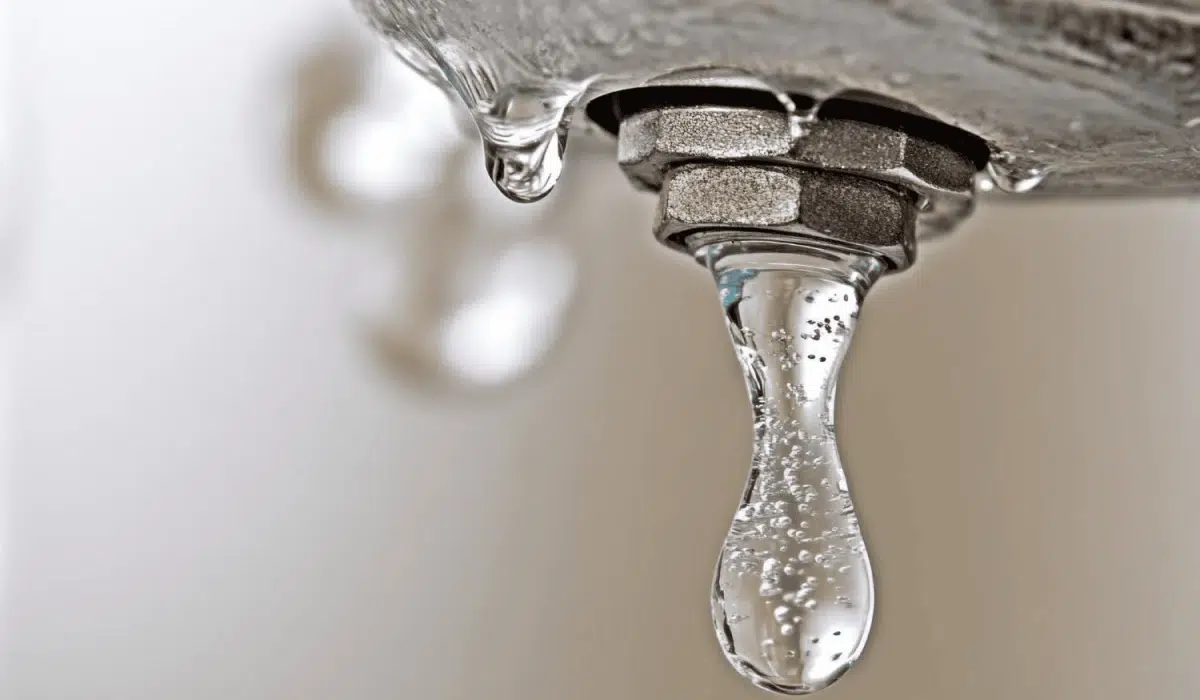Drip, drip, drip! If you’re dealing with a leaky faucet in San Antonio, Texas, you’re wasting water and potentially causing damage to your home. The good news? You can learn how to fix a leaky faucet yourself and save some cash in the process. Whether you’re in the Alamo City or nearby areas like New Braunfels or Boerne, these DIY tips will come in handy for your Texas home!
Different Types of Faucets
Before you start fixing your leaky faucet, it’s important to know what type you’re trying to fix. In San Antonio and the surrounding areas, you’ll come across four main types of faucets.
Compression Faucets
Compression faucets have been around since indoor plumbing became a thing. You’ll spot them by their two handles. One handle is for hot water and the other is for cold. When you turn these handles, you’re working a large screw with a washer at the end. As you open the faucet, the washer rises, letting water flow. Close it, and the washer lowers, cutting off the water. They’re called compression faucets because you need to apply some pressure to turn the handles.
Cartridge Faucets
Cartridge faucets can be hard to identify because they come in both single and double-handle versions. The double-handle ones look a lot like compression faucets, but they are smooth to turn while compression faucets need a bit of muscle. Inside, there’s a hollow metal cartridge that moves to control water flow and temperature.
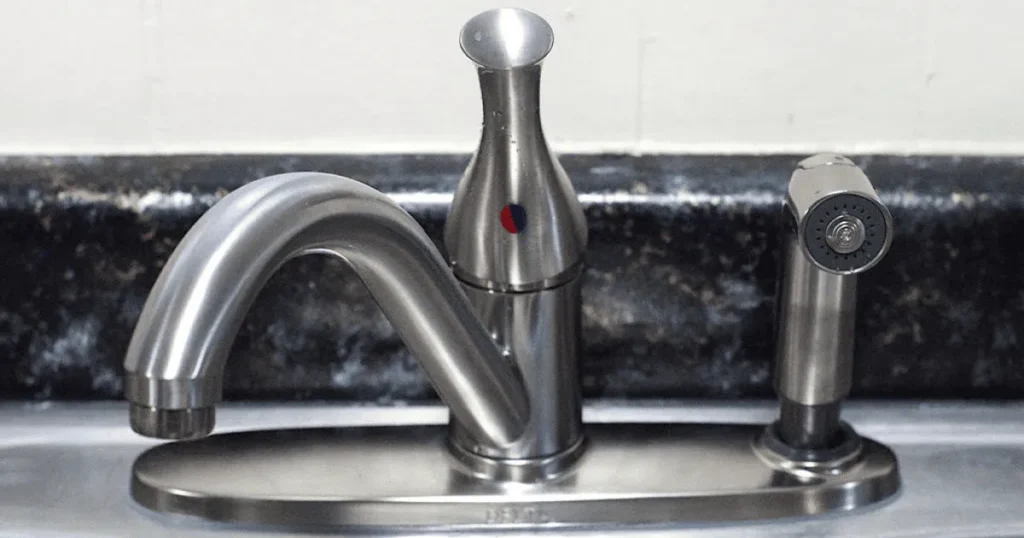
Ball Faucets
You’ll often find ball faucets in kitchens. They have a single handle that moves over a ball-shaped cap at the base. This ball has chambers and spring-loaded rubber seals inside. As you move the handle, the ball shifts to control water flow and temperature.
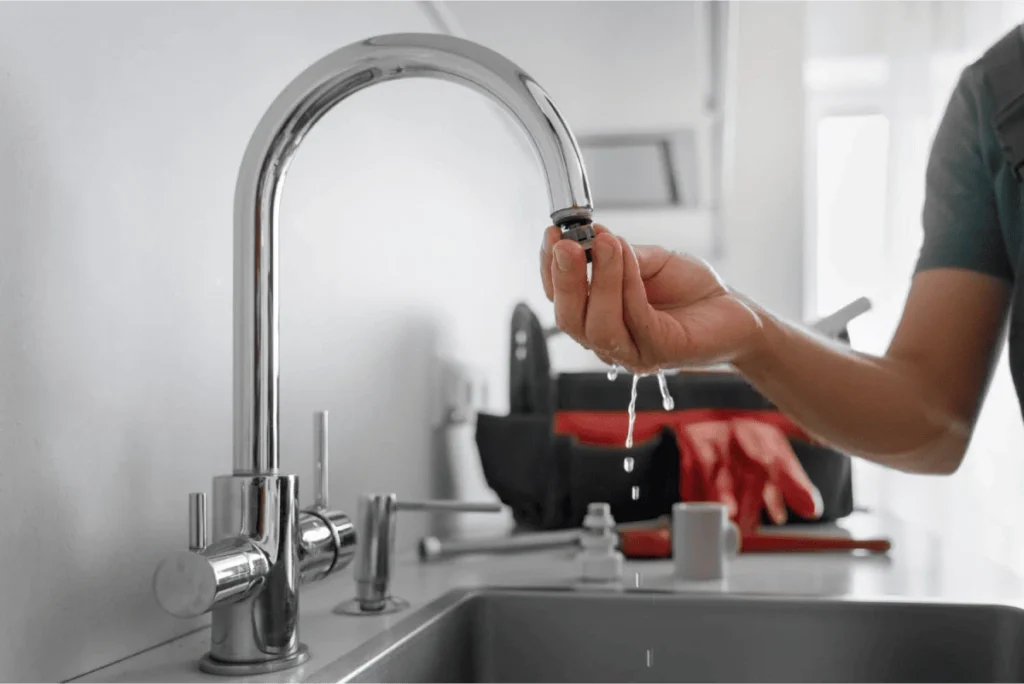
Ceramic Disk Faucets
Ceramic disk faucets are the newer faucets on the market. They look similar to ball faucets with their single handle, but they’re wider at the base. Inside, two ceramic disks slide against each other to control water flow. They’re tougher faucets and tend to last longer than other types.
Diagnosing the Source of the Leak
With the knowledge of the types of faucets in San Antonio, Texas, homes, it’s time to figure out what is causing the drippy faucet. There are three main spots where your faucet might be leaking.
Spout Leaks
Spout leaks are the most obvious reason. You’ll notice water dripping from the spout even when the faucet is off. At first, you might have to turn the handle a bit tighter each time. As it gets worse, you’ll see a constant drip, drip, drip. Not only does this waste water, but it can also stain your sink after a while.
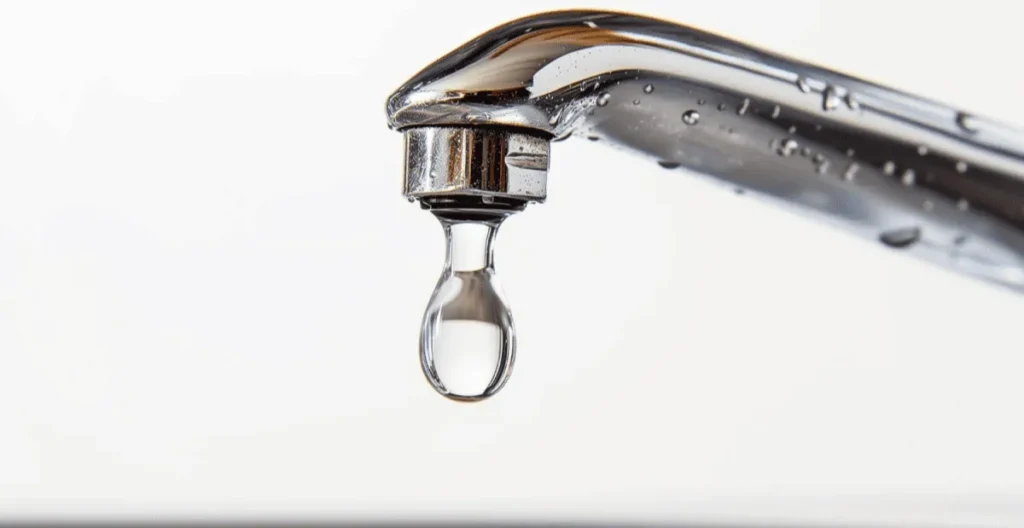
Base Leaks
These leaks happen where the faucet meets the sink. You might see water pooling around the base when you turn the faucet on. To check for this, dry the area around the faucet. Then, turn on the water and watch closely. If you see water seeping out, you’ve got a base leak.
Handle Leaks
For a handle leak, water might puddle on the base plate, making it look like a base leak. To test for this, wrap a paper towel around the handle, then turn on the faucet. If the paper towel gets wet, the leak is coming from the handle and not the base. Remember, if you’re dealing with a pullout or pulldown wand, make sure the connections are tight. If you’re still having trouble, consider calling a professional plumbing service.
DIY Repair Techniques for Each Faucet Type
Fixing Compression Faucets
Got a leaky compression faucet in your San Antonio, Texas, home? Below are the steps to get rid of that drip, drip, drip.
-
- Turn off the water supply and drain the faucet.
- Remove the decorative cap and handle screw.
- Take off the handle and unscrew the packing nut.
- Pull out the stem and check for worn-out parts.
- Replace the seat washer if it’s damaged.
- Install a new O-ring if the handle’s leaking.
- Clean or replace the valve seat if needed.
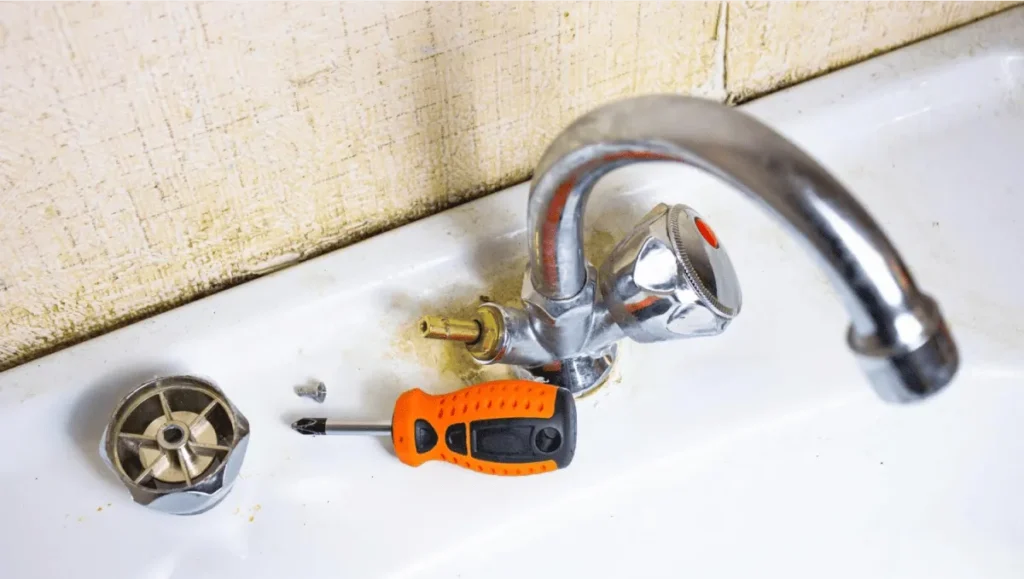
Repairing Cartridge Faucets
Cartridge faucets on the other hand, don’t take as many steps to fix on your own!
-
- Shut off the water and remove the handle.
- Take out the retaining clip and pull the cartridge straight up.
- Replace damaged O-rings or the entire cartridge if necessary.
- Reassemble the faucet and test for leaks.
Addressing Ball Faucet Issues
Ball faucets leaks are common in kitchens. Here are some steps you can take to fix them!
-
- Remove the handle and cap.
- Lift out the ball assembly and check for wear.
- Replace valve seals and springs if worn.
- Install a new ball assembly if damaged.
Ceramic Disk Faucet Maintenance
For ceramic disk faucet leaks, follow these steps to get your water back to running right.
-
- Turn off the water supply.
- Remove the handle and cartridge.
- Clean sediment from the openings.
- Replace seals if worn.
- If cleaning doesn’t work, install a new cartridge.
Remember, if you’re not comfortable with DIY repairs, it’s okay to call a professional. However, with these tips, you’ll be well-equipped to tackle most faucet issues in your Texas home on your own!
Preventing Future Leaks and Maintenance Tips
Regular Inspections
Make sure your faucets stay in good condition by checking them every now and then. Look for things like loose handles or buildup from minerals. If you notice any problems, fix them right away. For bigger issues, calling a professional like o5 Plumbing can help prevent bigger problems later on.

Proper Usage Habits
How you use your faucets matters. After washing up, take a second to wipe down the base of your faucet. This habit prevents water from building up and causing corrosion. For faucets you don’t use often, like in a guest bathroom, turn off the water supply at the shut-off valves. This keeps the internal parts from getting stiff & brittle.
Water Quality Considerations
San Antonio’s water is known for being hard, meaning it has a lot of minerals in it. These minerals can build up in your faucet and lead to leaks & reduced water flow. If you notice your water stream getting weaker, try cleaning out the mineral deposits or remove the faucet for a deeper clean. Also, watch your water pressure. If it’s too high, it can damage your plumbing system.
Fixing Your Faucet in San Antonio, Texas
Fixing a leaky faucet in San Antonio, or nearby areas like New Braunfels or Boerne, doesn’t have to be difficult. With a little effort, you can handle this common household issue yourself. By understanding your faucet type, finding the leak, and following repair steps, you can save money and reduce water waste. Regular maintenance is important to keeping your faucets working well. If you’re not comfortable with repairs or the job seems complicated, don’t hesitate to call a local plumber. Taking care of your faucets makes sure they’ll last for years to come in your Texas home.

